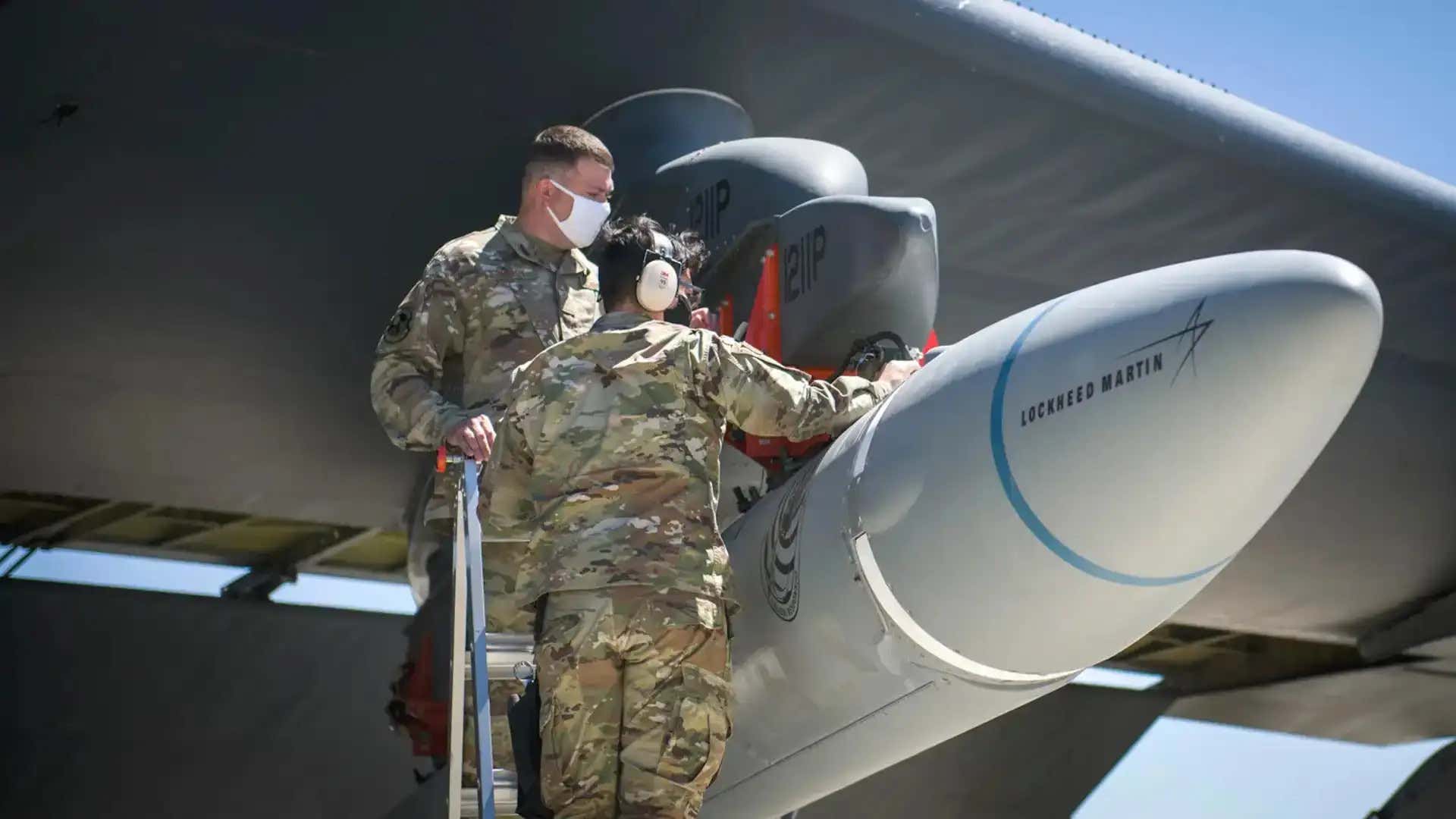In a major setback, the US Air Force’s second attempt to conduct the flight test of a hypersonic weapon proved to be a dud. The two successive failures perhaps explain why the US military is lagging in harnessing hypersonic technology while its arch-rival Russia has zoomed past.
The test involved a prototype of the AGM-183A Air-launched Rapid Response Weapon (ARRW), a hypersonic missile. The missile was able to successfully separate from the B-52H bomber which was carrying it, however, the rocket engine did not ignite.
“The Air Force conducted its second AGM-183A Air-launched Rapid Response Weapon booster flight test on July 28. While it did not meet all flight objectives, the test demonstrated several first-time events as the program continues to track toward fielding a hypersonic capability in the early 2020s,” a statement issued by the Eglin Air Force Base said.
In the earlier attempt, the weapon was unable to even separate from the wing of the B-52H bomber.
The latest test was conducted on July 28 over the Point Mugu Sea Range in the Pacific Ocean, off the coast of Southern California and the outcome was announced by the US Air Force on July 30.

“The missile cleanly separated from the aircraft and successfully demonstrated the full release sequence including GPS acquisition, umbilical disconnect and power transfer from the aircraft to the missile”, an Air Force press release said.
“The missile also demonstrated fin operation and de-confliction maneuvers, which ensure a safe operation for the aircrew. Following the safe separation maneuvers, the rocket motor did not ignite”.
https://twitter.com/TeamEglin/status/1421124274593701893
Even though the flight test was unsuccessful, the Air Force said that the test still provided valuable data and “demonstrated several first-time events as the program continues to track toward fielding a hypersonic capability in the early 2020s”.
According to reports, the test schedule was the same as the Booster Test Flight 1 test, BTF-1, in April. The ARRW was supposed to use its rocket booster to accelerate a wedge-shaped unpowered hypersonic boost-glide vehicle sitting inside the nose cone on top of the missile and loft it to a desired altitude and speed.
Once there, the nose cone breaks away and the vehicle is released, after which it glides along atmospheric flight trajectory at hypersonic velocity toward its target. Hypersonic speeds are defined as anything above Mach 5.
The boost-glide vehicle is designed to be highly maneuverable, which, combined with its speed and flight profile, makes it ideal for penetrating through dense enemy air defenses to strike at time-sensitive and other high-value targets.
Those performance attributes give opponents less time, overall, to react to the incoming threat, making it extremely difficult for them to relocate assets or otherwise seek shelter.
“Developing first-of-its-kind weapons is a difficult business and this is why we test”, Air Force Brigadier General Heath Collins, the Air Force’s Program Executive Officer for Weapons, was quoted in the statement cited above.
“This is a critical capability for our Air Force and we have the very best team working to figure out what happened, fix it and move out to deliver ARRW to our warfighters as quickly as possible”.
Russia Is Far Ahead
As the US Air Force faced two successive failures, Russia and China have achieved success in developing their hypersonic weaponry.
Russia has three major hypersonic weapons — the Avangard, the Kinzhal, and the Zircon — which President Vladimir Putin has dubbed “invincible”. And all of them cleared tests.
On July 19, the Russian Admiral Gorshkov frigate had successfully test-fired the Tsirkon (Zircon) hypersonic missile against a surface target at the range of over 350 km and the flight speed reached 7 Mach, the Russian Defense Ministry was quoted as by RIA Novosti.
“According to live monitoring data, the Zircon missile successfully hit a target directly at a range of over 350 km. During the test, the tactical and technical characteristics were confirmed. The flight speed reached nearly 7 Mach”, the statement said.
“No one except Russia has hypersonic weapons but everyone wants them,” Moscow-based independent defense analyst Alexander Golts told AFP.
There were reports last year saying Russian fifth-generation Sukhoi Su-57 was spotted carrying a prototype of the Kinzhal (dagger in Russian). “The Kinzhai combines a modified MiG-31 Foxhound interceptor with the Iskander surface-to-surface missile, which has reportedly received the NATO codename Killjoy in its air-launched form,” The Drive reported.
https://twitter.com/mod_russia/status/972581554642923527
The Avangard hypersonic intercontinental ballistic missile (ICBM) is the most potent among all three, which can deliver both nuclear as well as conventional payloads. According to a BBC report, the first regiment of Avangard hypersonic missiles was put into service in December 2019.
China is also developing hypersonic systems at an aggressive pace, with huge investments in test facilities and engineering expertise. The country claims to have successfully tested the DF-17, a road-mobile medium-range ballistic missile (MRBM) designed to launch a hypersonic glide vehicle (HGV).
It has a reported range of 1,800-2,500 kilometers. Other HGVs include the DF-ZF, with a range of 1,600-2,400 km and a speed of Mach 5 – Mach 10. China is also reportedly deploying these vehicles on its DF-21 and DF-26 theater-range ballistic missiles.
While the Air Force may learn from this unsuccessful missile flight testing and use the information in its endeavor, this capability is crucial for the US to keep pace with adversaries, Russia and China.
Co-authored by Kashish Tandon